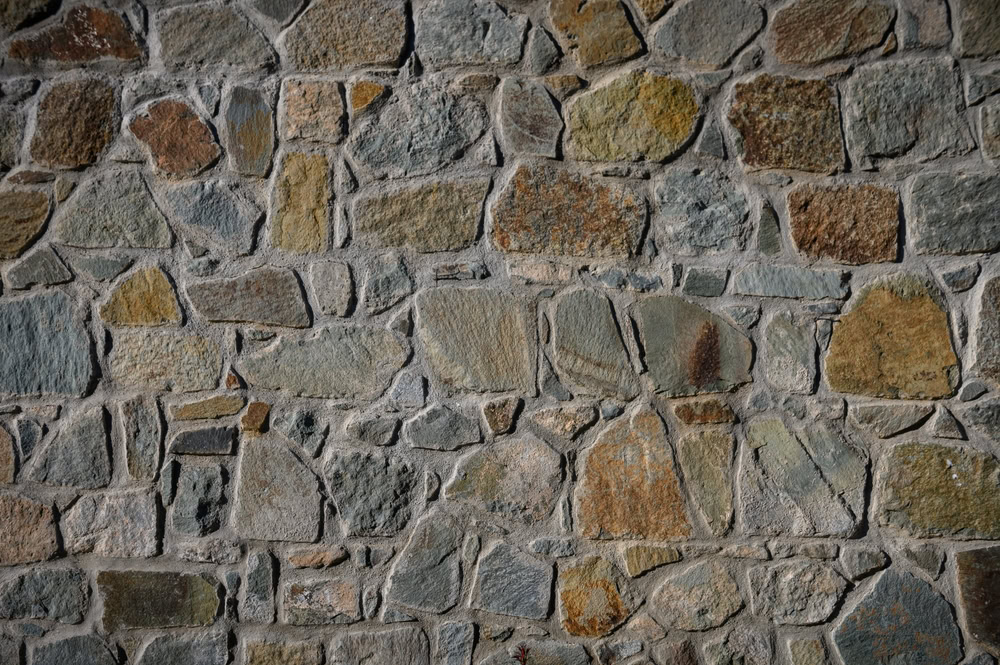In 2024, the Concrete Masonry and Hardscapes Association—a nationally renowned professional organization—published Remodeling 2024: Cost vs. Value Report. One particular finding was astonishing: installing stone cladding on a home’s exterior nets homeowners a 153% return on investment, on average!
The real estate market loves stone cladding—also known as stone veneer siding.
As home exterior experts, we at Above & Beyond are here to empower you to discover exactly what this means for you. What is stone veneer siding? What makes it such a great value-add? And, which stone veneer siding style is best for your home?
What Is Stone Veneer Siding?
Stone veneer siding is a thin, decorative layer of stone on a building’s exterior.
Cultured stonework is the most typical process used to create stone cladding. Cultured stone is a compound material. It’s typically manufactured from limestone or marble quarry, pumice and shale aggregates, iron oxide, cement, and other mineral pigments.
Travertine, granite, quartzite, and sandstone are also popular inclusions in cultured stonework.
Natural stone cladding is rarer and more expensive, as it offers more control over the resulting stone’s look. This process uses thin-sliced natural stone, treated to adhere to walls in strips.
Notably, neither cultured nor natural stone veneer siding uses synthetic polymer.
Cladding only uses naturally occurring stones and cement, not wholly synthetic materials.
Unlike load-bearing stonework, stone veneer siding isn’t part of the architecture’s structure. Instead, it’s applied to the outer walls of a dwelling or commercial building that’s already built.
Cladding is typically used to beautify a building, improve a design’s cost-effectiveness, and protect the otherwise-exposed surface layers of the building’s materials.
Top 10 Best Stone Veneer Siding Options For Your Home
Homeowners have a wide range of options when considering exterior cladding. No two homes have identical needs!
At Above & Beyond, we believe the best choice is what works best for you. In this guide, discover the nature and benefits of the top ten most popular varieties of stone veneer siding.
1. True Stack
True stack stone veneer is designed to look like dry stacked stone. Dry stacking doesn’t use mortar or grout, so it results in clean, strong lines. It typically presents a rustic, “mortarless” look, and its Scottish origins come through even in modern creations.
True stack cladding can grant homeowners those same benefits at a fraction of the cost.
2. Fieldstone
Traditional fieldstone walls also use a mortarless technique. Unlike true stack designs, fieldstones interlock in a less-uniform way. Contemporary fieldstone veneer siding uses granite, sandstone, limestone, and igneous rock to capture the source’s iconic aesthetic.
3. Tuscan Fieldstone
Tuscan fieldstone is similar to its broader counterpart in many ways. To make a Tuscan fieldstone wall, use irregular stones in various sizes, and fit them together. The resulting face will be sturdy and craggy.
Unlike general fieldstone, Tuscan fieldstone cladding incorporates rocks whose coloration and gradient reflect Mediterranean geography.
4. Ledgestone
A ledgestone design stacks rectangular stone in even, parallel horizontal lines. The stonework’s gridlike shape is reminiscent of a ledger—hence its name.
The organized look of ledgestone is part of its appeal. Travertine, quartzite, and marble are excellent selections for a ledgestone cladding.
5. Shadow Ledgestone
Shadow ledgestone faces have the same structure as ledgestone more generally. However, shadow ledgestone offers more variety in stone depth. It’s also typically built from darker=-hued stones, including shale, slate, and canyon sandstones.
6. Cobblestone
Cobblestone is one of the most durable stone veneer options. It has a high degree of resistance to harsh weather, water, and environmental issues.
Cobblestone incorporates granite, basalt, and limestone. Basalt is a hard volcanic stone, while limestone is softer. Unlike many of the previously described options, traditional cobblestone isn’t dry-stacked. Instead, it uses mortar.
7. Cut Cobblestone
Cut cobblestone takes the regular shaping structure of conventional cobblestone, then alters it to fit a design incorporating stones of varied sizes. It’s one of the most popular and versile cladding styles. Homeowners have applied it as an accent to bother interior and exterior walls, and it’s a popular choice for stone-like flooring.
8. Ridgestone
Ridgestone designs were originally developed to sit at the top of a well or mineshaft. The design sets thick rectangular stones and thin linear stones together in an alternating pattern. This allows for a precisely tailored look without sacrificing the irregular stones’ natural appeal.
9. Riverstone
Riverstone is one of the strongest and most slip-resistant stone cladding options. It’s typically composed of metamorphic rock, like phyllite.
Riverstone is also incredibly fire-safe, as the stone is virtually non-combustible. Not only is it an elegant veneer siding, but it’s also an excellent option for outdoor patio and pool tiles.
10. Brick
Brick is a classic home material. Its beauty and durability are iconic, and it’s notably noise-reducing, fire-resistant, and energy-efficient. Brick veneer siding offers many of the benefits of wholly-brick walls, at a more affordable price.
Get Custom Stone Veneer Siding From Exteriors Experts. Go Above & Beyond.
At Above & Beyond Exteriors, we create high-ROI solutions to strengthen and beautify homes like yours.
If you have a project in mind, or you’d like to learn more about what we can do for you, call us at (908) 588-9575. Or, contact us below to get a free estimate.


 (908) 588-9575
(908) 588-9575